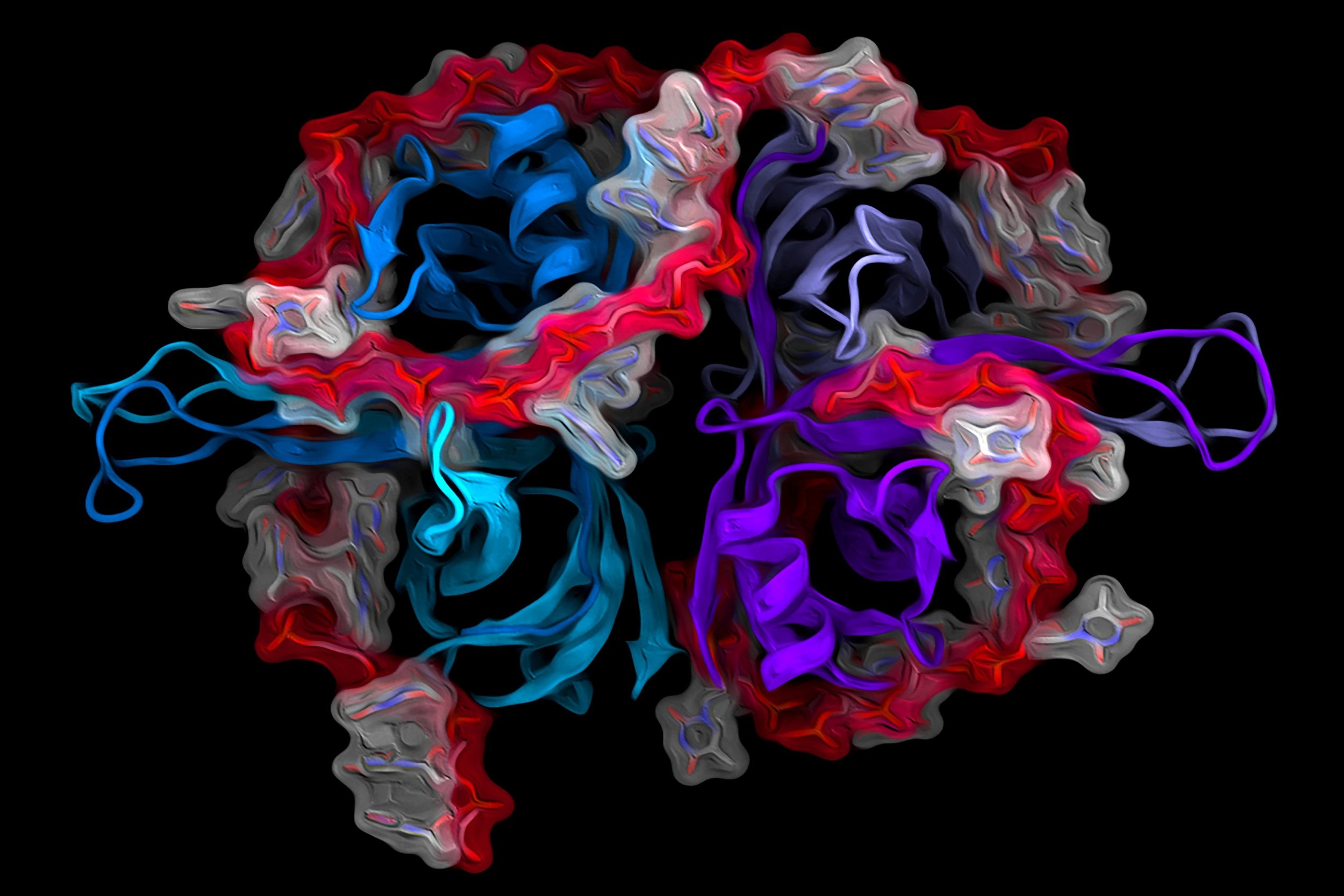
MolBiophys
When 2 labs collide…
Discover the cutting-edge research from the Coutsias and Simmerling labs, where they introduce differentiable solvent-accessible surface area (dSASA), a precise method for calculating SASA and atomic derivatives using GPUs. This innovative technique significantly accelerates molecular simulations, achieving up to 20-fold speed improvements and over 98% accuracy. Learn how dSASA outperforms traditional methods, enhancing the study of biomolecular interactions and dynamics.
Of note, Dr. Xin Cao (first author) is a postdoc in the Coutsias lab and Dr. Yuzhang Wang (co-author) is a current PhD student in the Simmerling lab.
Exact Analytical Algorithm for the Solvent-Accessible Surface Area and Derivatives in Implicit Solvent Molecular Simulations on GPUs Xin Cao, Michelle H. Hummel, Yuzhang Wang, Carlos Simmerling, and Evangelos A. Coutsias. Journal of Chemical Theory and Computation 2024 20 (11), 4456-4468. DOI: 10.1021/acs.jctc.3c01366
New Review Article:
Entropy, irreversibility and inference at the foundation of statistical physics
In statistical physics, understanding large-scale systems hinges on the behavior of their microscopic components. Traditionally, the field has relied on entropy maximization at equilibrium. However, researchers Jonathan Asher Pachter, Ying-Jen Yang, and Ken A. Dill of the Dill Lab highlight new advancements extending this principle to non-equilibrium processes.
Their review explores recent developments, including the Jarzynski equality and stochastic thermodynamics, which adapt entropy maximization for dynamic systems. By viewing entropy as an inference principle, they introduce the principle of maximum caliber, applicable to path entropies.
This work aims to unify disparate research approaches, enhancing interdisciplinary collaboration and advancing our grasp of non-equilibrium phenomena in statistical physics.
“We seek the foundational principles of Non-Equilibrium Statistical Physics (NESP) in order to model complex dynamical systems, especially in biology.”

Check out what Eugene Serebryany has been working on: The Functional Significance of High Cysteine
Content in Eye Lens γ-Crystallins
This paper combines literature review and new bioinformatic analyses to explore how chemistry and molecular biophysics has shaped the evolutionary trade-offs in proteins of the eye lens, giving us sharper vision yet also pre-disposing us to cataracts later in life.
WHY DOES NATURE SELECT TANDEM REPEAT PROTEINS? WHAT IS UNIQUE ABOUT THEM?
Single molecule experiments (nanoaperture optical tweezers) and simulations give insights into effects of mutations on conformational adaptability.
Banerjee A, Mathew S, Naqvi MM, Yilmaz SZ, Zacharopoulou M, Doruker P, Kumita JR, Yang SH, Gur M, Itzhaki LS, Gordon R, Bahar I (2024) Science Advances, 10(22):eadn2208.
Global modes of motion predicted by the elastic network model ANM for transcriptional regulators predispose them to interact with DNA and RNA. The TALE-repeat containing regulator (pink) undergoes a conformational change of 9.46 Å upon binding DNA (green). A single soft mode provides a good description of this change in structure (see the movie). The overlap plot above shows that ANM modes 1, 3 and 4 are sufficient to yield a cumulative correlation cosine of > 0.95 with the structural change stabilized by DNA binding.
The answer lies in their unique adaptability to sustain large structural changes while retaining their stability. TRPs serve as excellent scaffold proteins, and accommodate large rearrangements. Their role is much more than supporting stability and adaptability. They provide easy paths to conformational changes required for the function of multisubunit machines.
Elastic network model analysis of TRP-containing machines demonstrated how their soft modes of motion favor cooperative events required for biological function. Below is a transcriptional regulator that uses its soft modes to engage a DNA segment. See more details in TRenDy (TR proteins Dynamics) page.
See:
Carlos Ventura, Anupam Banerjee, Maria Zacharopoulou, Laura S Itzhaki, Ivet Bahar (2024) Tandem-repeat proteins conformational mechanics are optimized to facilitate functional interactions and complexations. Curr Opin Struct Biol 84, 102744
Kaynak BT, Dahmani ZL, Doruker P, Banerjee A, Yang SH, Gordon R, Itzhaki LS, Bahar I (2023) Cooperative mechanics of PR65 scaffold underlies the allosteric regulation of the phosphatase PP2A. Structure 31, 607-618.
An engineered (beta-propeller family) protein composed of seven tandem repeats. The TR structure favors cooperative large scale counter-rotations.


